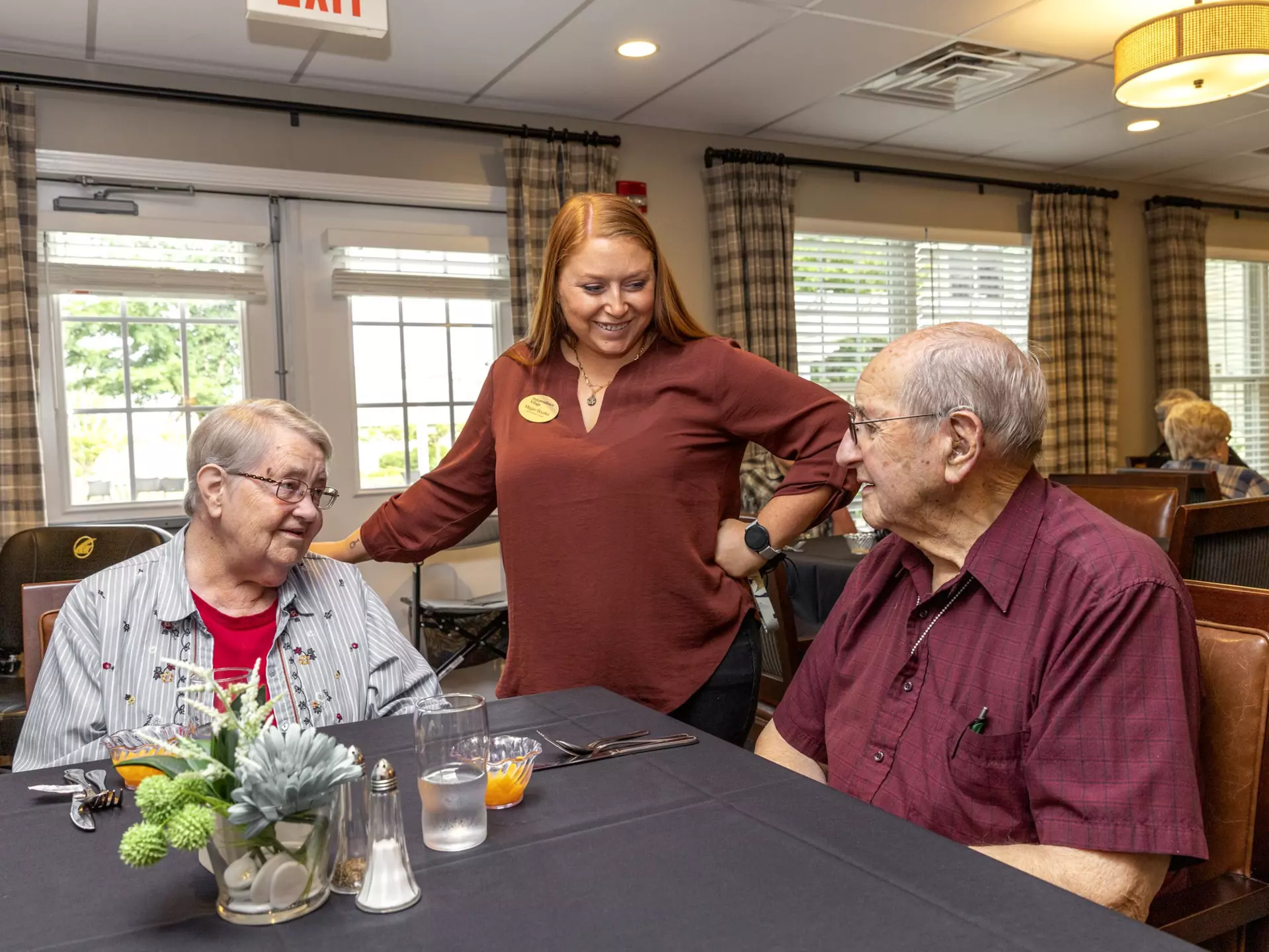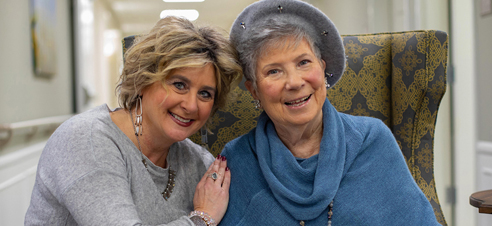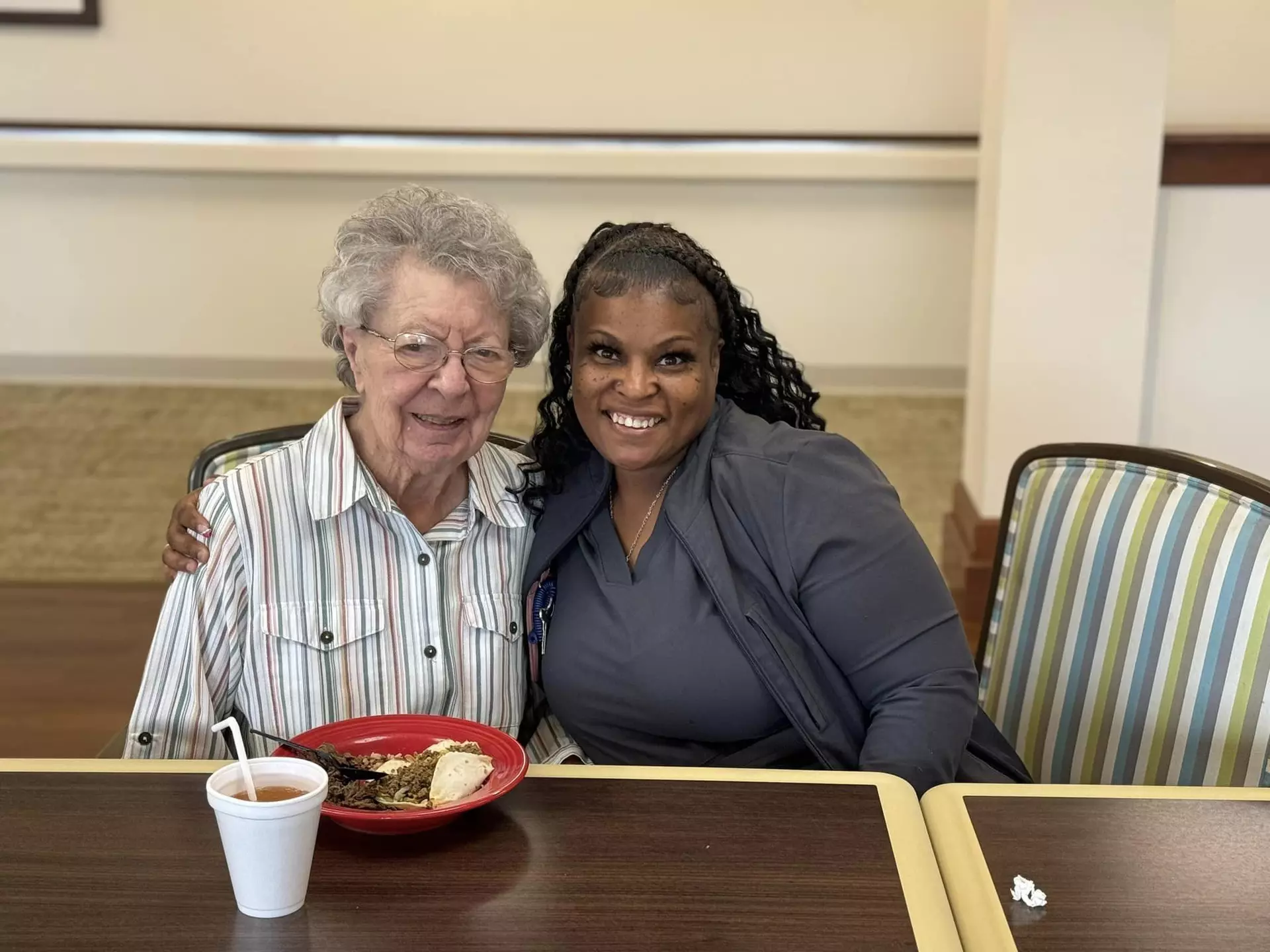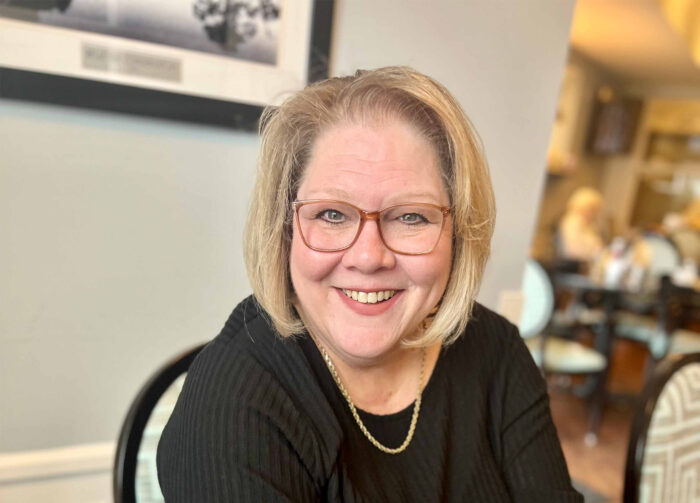Every senior is different and fortunately, there are different types of care services available to support the unique needs of individual aging adults. However, choosing the right option isn’t always straightforward, and it’s normal to feel unsure about what kind of help is best for you or someone you care about.
As you explore additional assistance for yourself or a loved one, it might be helpful to have a clear understanding of the options that are available to you. In this blog, we’ll explore some common types of care for seniors to help you find the appropriate support for your specific needs and circumstances.
When Is It Time to Consider Senior Care?
It’s normal to require additional support as we age. However, it’s not always obvious when you or a family member could use extra help. Here are some possible signs that may indicate someone could benefit from additional assistance:
- Difficulty Managing Daily Routine: Some age-related limitations may make it challenging for seniors to manage day-to-day tasks on their own. If someone is beginning to struggle with activities of daily living (ADLs), like bathing, dressing, and eating, they may benefit from additional support.
- Declining Physical Health: Many older adults experience a decline in physical health due to the natural effects of aging. This may make it challenging for individuals to perform everyday tasks or live safely on their own. If you’re noticing sudden health changes that could put you or your loved one at risk, there are many types of care for seniors that can provide a safe and comfortable home.
- Social Isolation: Staying connected with friends and loved ones is important at any age. However, our social circles tend to shrink as we grow older, and it’s common for seniors to feel lonely, particularly if they live alone. If your aging loved one frequently spends more time alone or is no longer engaging in activities they once enjoyed, it may be worth looking into available options for senior care.
- Frequent Forgetfulness: Just like physical abilities, our cognitive skills tend to decline as we age. In some cases, these changes may impact daily life and even make living alone unsafe for those with memory challenges. Some possible signs to watch out for include leaving the stove on, difficulty keeping up with medication, or getting lost in familiar places. In cases like these, it may be helpful to look into the different types of care for seniors.
- Caregiver Burnout: While supporting a loved one can be a deeply fulfilling experience, the day-to-day demands of caregiving can sometimes feel overwhelming. If you’re struggling to support your loved one’s needs at home, some types of senior care can allow you to take a break while ensuring your family member receives the support they need.
- Mobility Issues: Sometimes, older individuals experience age-related conditions like arthritis, weakened muscles, or osteoporosis, which can make it harder for them to move around safely. If you notice your aging parent having trouble getting in and out of bed or moving around, it may be a sign that they could benefit from extra support.
Overview of Senior Care Options
When considering additional assistance for yourself or a family member, it’s always helpful to have a clear understanding of what’s available.
Here are some common types of care for seniors that you may encounter during your search:

Home Care Services
A recent survey showed that many seniors prefer to remain in their homes as they age. Home care services are designed to help older adults continue to live independently in their own homes while receiving the support they need.
This type of support may be tailored to meet specific needs, ranging from personal care, companionship, and specialized medical assistance, depending on what’s required. Home care services are typically ideal for someone who wants to age in place or who’s not quite ready to move into a community.
Here are a few options you may come across:
Companion Care
Social interaction is important at any age. However, as people grow older, they often have fewer opportunities to connect with others, sometimes leading to feelings of loneliness and isolation.
Companion care services typically provide social interaction and emotional support from the comfort of a person’s home. Depending on your loved one’s needs, a companion might visit daily, weekly, or monthly to assist with daily tasks and offer meaningful company.
Companions can help with transportation, light housekeeping, and even join in on your loved one’s favorite activities. While this type of assistance can be tailored to a person’s specific needs, it may become costly if round-the-clock support is required.
Providers typically charge by the hour, so families pay based on the time a companion spends with their loved one. On average, providers charge between $20 and $30 per hour, though rates can vary depending on location, your family member’s specific needs, and the caregiver you choose.
In-Home Care
It’s normal for our loved ones’ needs to change as they age. If someone you care about could benefit from extra help, in-home care services can help them live safely at home while receiving the right support for their specific needs.
In this setup, a professional caregiver, such as a nurse, home health aide, or therapist, is usually hired by the individual or their family to provide care in a person’s home.
In-home support services typically range from help with day-to-day routine, such as mobility and transferring, feeding, and toileting, to more specialized support, like wound care, physical therapy, or managing chronic health conditions.
According to Genworth’s Cost of Care Survey, the national median cost for in-home care is around $24 per hour, or roughly $4,000 per month. However, rates can vary based on several key factors, including caregiver demand in your area and the level of care your loved one requires.

Community-Based Care
While some people prefer to remain at home as they age, there are many living options designed to meet the needs of older adults — while also providing connection, maintenance-free living, and chef-prepared meals that aren’t available at home. These arrangements typically offer a range of accommodation options, support services, access to services and amenities, and more, to help improve the quality of life for residents.
Here are some popular options you might come across:
Senior Living Communities
Senior living communities usually provide a high quality of life for older adults by providing access to necessary services and amenities as they age. This usually includes a variety of housing options, caregiver access, planned activities and events, and more.
Some examples you might encounter include:
Active Adult Communities
Active adult communities are a great option for older adults looking for a relaxed, maintenance-free lifestyle. Although they’re sometimes referred to as 55+ communities, many are happy to welcome residents under the age of 55.
You’ll typically find a variety of accommodation options, such as townhomes, condos, and apartments, designed to suit different needs and preferences. Additionally, these communities are usually located near convenient amenities, like walking trails, swimming pools, clubhouses, fitness centers, and golf courses, to help make daily life easier and more enjoyable for residents.
Routine home maintenance tasks, like yard work, lawn care, and basic repairs, are usually handled by community employees so that residents have more time to spend time with loved ones, explore personal interests, and more.
While some services, like light housekeeping and meal preparation, may be included, active adult communities may not be ideal for someone who needs round-the-clock assistance with activities of daily living (ADLs) or specialized medical care.
The cost of living in an active adult community usually includes homeowners association (HOA) fees, access to amenities, utilities, housekeeping, and maintenance. Monthly costs typically range from $1,500 to $4,000, depending on the location, available amenities, and level of service provided
Independent Living Communities
Independent living communities are designed for older adults who want to live life on their own terms without worrying about daily chores or the responsibilities of homeownership. Residents in these communities usually manage their own daily routines, knowing help is readily available when needed. Employees may help with daily chores like meal preparation, laundry, and light housekeeping.
You’ll typically find plenty of opportunities to connect with other seniors who share your interests and experiences through planned activities and events, group outings, or casual chats in shared areas. Many of these communities also provide a range of amenities and services, such as beauty salons, fitness centers, and transportation services, to help enhance the quality of life for residents.
While some independent living communities may provide access to medical support if needed, this option may not be ideal for someone who needs extensive medical support.
Independent living costs can range from $1,500 to $6,000 monthly, depending on several key factors such as individual needs, the location of the community, and the specific amenities provided.
Enhanced Living
Enhanced living is an ideal option for seniors who value independence but may want the flexibility to add supportive services as their needs change. Designed to provide the best of both worlds, enhanced living allows residents to enjoy the maintenance-free lifestyle and amenities of independent living, with access to care and assistance when and if it’s needed.
Residents typically live in private apartments and enjoy services like restaurant-style dining, housekeeping, and vibrant community programming. What sets enhanced living apart is its personalized approach. Residents can choose additional support services — including help with medication management, mobility, or daily tasks — without needing to transition to a different level of care.
This makes enhanced living a smart option for individuals who may not need assistance now but want the peace of mind that support is available if needed in the future.
Monthly costs for enhanced living vary depending on the level of services selected but are generally positioned between independent living and assisted living options. Pricing transparency and customizable care plans make it easier for residents and families to plan confidently for the future.
Assisted Living Communities
Sometimes, the natural limitations of aging can make it challenging for older adults to perform day-to-day tasks on their own. Assisted living is often a good fit for individuals who might benefit from support with activities of daily living (ADLs), like personal hygiene, housekeeping, and meal preparation, but don’t require ongoing medical support. The goal of assisted living is to provide necessary support for an individual’s unique needs while encouraging as much freedom and independence as possible.
Residents usually live in private or semi-private apartments with access to shared amenities, including restaurant-style dining, libraries, and fitness centers. Many assisted living communities offer plenty of fun-packed activities to help residents socialize with others, including game nights, arts and crafts workshops, and community outings.
According to the 2021 Genworth Cost of Care Survey, the national median monthly cost of assisted living in the U.S. is around $4,500. However, expenses can range between $3,000 and $7,000, depending on the specific community, geographical location, and the services and amenities provided.
Memory Care
It can be difficult when someone you love is diagnosed with a memory condition. Please know that you are not alone in navigating this stage of your loved one’s journey. Memory care communities are thoughtfully designed to provide a safe and comfortable environment and improve the quality of life for people with memory challenges.
These communities typically have specially trained employees on-site to support the unique needs of individuals with memory impairments. This usually includes assistance with activities of daily living (ADLs), medication management, and providing meaningful companionship.
Most memory care neighborhoods feature thoughtfully designed indoor spaces, secure entrances, and safe outdoor areas where residents can move around safely. You’ll also find plenty of cognitive activities and programs to encourage mental stimulation and manage the symptoms of memory loss.
On average, monthly costs for memory care may range between $4,000 and $7,000, although this can vary depending on the specific community and your loved one’s individual needs and circumstances.
Nursing Homes
Nursing homes offer personal care and support for individuals with serious health conditions. These communities usually have certified professionals, such as dietitians, registered nurses, and therapists, to offer medical care for residents with various needs, including physical therapy, wound care, and managing symptoms of chronic conditions.
In addition to medical support, residents in a nursing home may receive help with activities of daily living (ADLs), such as transferring, bathing, feeding, and grooming. Due to the higher level of medical support provided, nursing homes typically do not offer many life enrichment activities or socialization opportunities. As such, they may not be appropriate for healthy older adults.
The average monthly cost of nursing home care is around $7,900 for a shared room and $9,000 for a private room, but this may vary significantly depending on where you live, the specific community, and the level of support your loved one requires.
Continuing Care Retirement Communities (CCRCs)
It’s normal for our needs to progress as we age. When choosing a support option for yourself or a loved one, it can be hard to plan for these unexpected changes. Continuing Care Retirement Communities (CCRCs) usually offer a variety of care options, ranging from independent living to skilled nursing services in the same location. This allows individuals to seamlessly adjust their level of support without leaving the community.
Along with support services, residents may also benefit from assistance with activities of daily living (ADLs), light housekeeping, and more, depending on their specific needs. Many of these communities also offer convenient access to a range of amenities, including fitness centers, swimming pools, and beauty salons. You might also find different housing options, such as condominiums, cottages, or private apartments, to suit individual preferences and lifestyles. CCRCs are often ideal for families seeking a long-term, all-inclusive solution for their loved ones.
It’s important to note that some CCRCs may have entry fees, which usually range from $40,000 to more than $2 million. The national average is approximately $402,000. In addition to the entry fees, residents may need to cover monthly expenses.
Care Homes
Care homes are typically family-style apartments equipped to support the needs of people who may no longer be able to live at home safely or independently, including older adults. Residents usually live in private or semi-private apartments, depending on their preferences and what’s available. While the size of care homes can vary, they typically have fewer residents compared to most senior living communities.
Residents in care homes usually receive a range of support services tailored to their specific needs. This often includes assistance with activities of daily living (ADLs), like bathing, dressing, and eating. Medical assistance may be provided if needed, but most care homes are not equipped to offer intensive medical care.
On average, care homes in the U.S. cost between $3,000 and $5,000 per month, though costs can be higher for specialized support.
Skilled Nursing
This type of arrangement typically offers a similar level of medical care as you would find in a hospital, making it a good fit for someone who needs ongoing medical care. Skilled nursing services are usually provided by certified medical professionals, such as medical doctors, dietitians, and therapists.
Most people who may benefit from skilled nursing services often require round-the-clock medical care and monitoring. You’ll also find caregivers available to assist residents with activities of daily living (ADLs) and other aspects of their daily routine.
Support may be arranged in nursing homes, hospitals, or within a senior living community. Residents are mostly people with ongoing medical needs, such as those with chronic conditions or individuals recovering from surgery or hospitalization. As such, this type of support may not be ideal for generally healthy individuals.
The average monthly cost of skilled nursing support in a nursing home is around $7,900 for a shared room and $9,000 for a private room.

Short-Term Care
Short-term care services are designed to support individuals for a duration of time. Someone may need short-term care for a few hours, days, or months, depending on their specific needs and situation. Short-term arrangements can be especially useful for individuals and families facing an urgent need, such as unexpected health changes or caregiver burnout.
Some key examples you might come across include:
Respite Care
Respite care provides a great option for caregivers who need to take a temporary break from the regular demands of caregiver duties while ensuring their loved ones continue to receive the care they need. Caregivers typically provide assistance in various settings, including at an individual’s home, a senior living community, or in a medical setting.
Caregivers may offer various services, including companionship, personal care, medication management, and more, depending on a person’s specific needs. One key benefit of respite care is that it can allow seniors to recover from a surgery or hospital stay, get a much-needed change of routine and environment, and give them a chance to socialize with other caregivers and residents.
The cost of respite care can vary based on several key factors, including the length of care needed, your family member’s specific needs, and the amenities offered.
Adult Day Care
Adult day care services offer temporary support during the day while caregivers unwind or attend to other responsibilities. Many of these programs offer meals and snacks, alongside assistance with activities of daily living, like transferring, bathing, and toileting. You’ll typically find plenty of fun games and activities to help residents enjoy their day.
In some cases, transportation may be provided to help individuals get around, such as getting to a doctor’s appointment or the grocery store. While some adult day care communities may offer light medical assistance, they may not suit someone who needs ongoing medical assistance.
The cost of adult day care services typically ranges from $50 to $150 per day, depending on the services provided and the location. For full-time care, costs could total between $1,000 and $3,000 per month.
Palliative Care
Experiencing a chronic illness can be an emotional and difficult journey for individuals and their families. Palliative care services are designed to provide comfort care as well as treatment options to manage symptoms and improve quality of life for individuals. Families may seek out palliative care if a loved one is diagnosed with a serious illness, such as obstructive pulmonary disease, chronic kidney disease, or liver failure.
Alongside supporting residents with their daily routine, caregivers usually assist with pain management and controlling ongoing symptoms, as well as offering emotional support. Palliative care may be provided in various settings, including hospitals, clinics, and even in a person’s home.
Hospice Care
Hospice care services are designed to improve comfort and quality of life for individuals nearing the end of life, often due to a terminal illness. To qualify for hospice care, a doctor typically must certify that the person has six months or less to live. In many cases, curative treatments and medications are stopped during this time. Instead, caregivers focus on minimizing pain, managing symptoms, and providing support with activities of daily living (ADLs).
Counseling may also be available to help individuals and their families cope with emotional and practical challenges. The average monthly cost of hospice care typically ranges from $10,000 to $15,000.
Factors That Impact The Decision
Deciding on the right type of assistance for yourself or someone you love can be a complex decision. During this process, it’s always a good idea to carefully consider what matters most to you or your family member.
Here are some important things to keep in mind when deciding between types of care for seniors:
- Level of Support Required: Different senior care types are designed to support individuals with various needs. Before deciding, it’s important to carefully consider the level of assistance you or your loved one needs and choose one that will best meet those needs.
- Location: Another key factor is location. Being closer to friends and loved ones can make visits easier, and location may also affect care costs.
- Financial Considerations: The right type of support can make a significant difference in your loved one’s quality of life. However, these services usually come at a cost, which can add up over time. Families and individuals may also explore various options to help pay for care costs, including:
- Private Pay: Some families may use resources such as retirement funds, pensions, Social Security, or savings to help cover their loved one’s caregiver costs. This option can get expensive over time, especially in situations where around-the-clock support is needed.
- Long-Term Care Insurance: Some long-term care insurance policies may help cover care costs. That said, it’s important to keep in mind that insurance policies may vary widely in coverage and cost, so it’s essential to review the terms carefully and select a policy that aligns with you and your loved one’s specific needs and situation.
- Medicare: Medicare may help cover some home health services for older adults who meet specific criteria, such as being homebound, requiring skilled nursing care, or therapy services. However, coverage may vary depending on where you live, so it’s crucial to understand what services are covered by your loved one’s policy.
- Medicaid: Medicaid is a state and federal program that supports individuals and families with limited income and resources. In some cases, it may be used together with other resources to pay for care costs. However, Medicaid typically only covers medical-related costs. If you’re considering this option, you may have to pay for room and board or accommodation out of pocket.
- Veteran Benefits: The Department of Veterans Affairs (VA) may provide financial assistance for veterans and their spouses. If your loved one qualifies, these benefits may help cover a portion of the care costs.
- Socialization Opportunities: If meeting new people is important to you or your family member, prioritize options that offer many opportunities to socialize with other residents, such as group outings, fitness classes, game nights, or hobby clubs.
- Amenities and Services: Some types of care for seniors, like senior living communities, offer a wide range of services and amenities to make life easier and more enjoyable for residents. When narrowing down your options, make a list of what matters most to you or your loved one, and see which services may offer those specific features.
How StoryPoint Group Communities Can Help You
At StoryPoint Group communities, we understand that every senior’s journey is unique — and so is the care they need. That’s why we offer a variety of personalized living options, from independent living to enhanced living, assisted living, memory care, and more. Whether you’re just starting to explore care options or need immediate support, our experienced team is here to guide you with compassion, clarity, and confidence.
We take the time to get to know each resident and their family, helping you find the right fit for your lifestyle, health needs, and preferences. From thoughtful amenities to a welcoming sense of community, we’re here to ensure that every step forward feels like the right one — for you or someone you love.
Frequently Asked Questions About Senior Care
As you explore different support services, it’s natural to have questions. Let’s go over some of the most common questions families ask about types of senior care:
Senior Living With StoryPoint Group Communities
At StoryPoint Group communities, our residents’ needs are at the heart of everything we do. Whether you’re looking for a relaxed lifestyle with convenient access to amenities and plenty of opportunities to socialize, need some extra help with activities of daily living (ADLs), or simply want a place to call home, our goal is to help you make the most of every day, your way.
To learn more about life with us, call us at 1-844-275-9990 or schedule a tour of a StoryPoint Group community near you.













